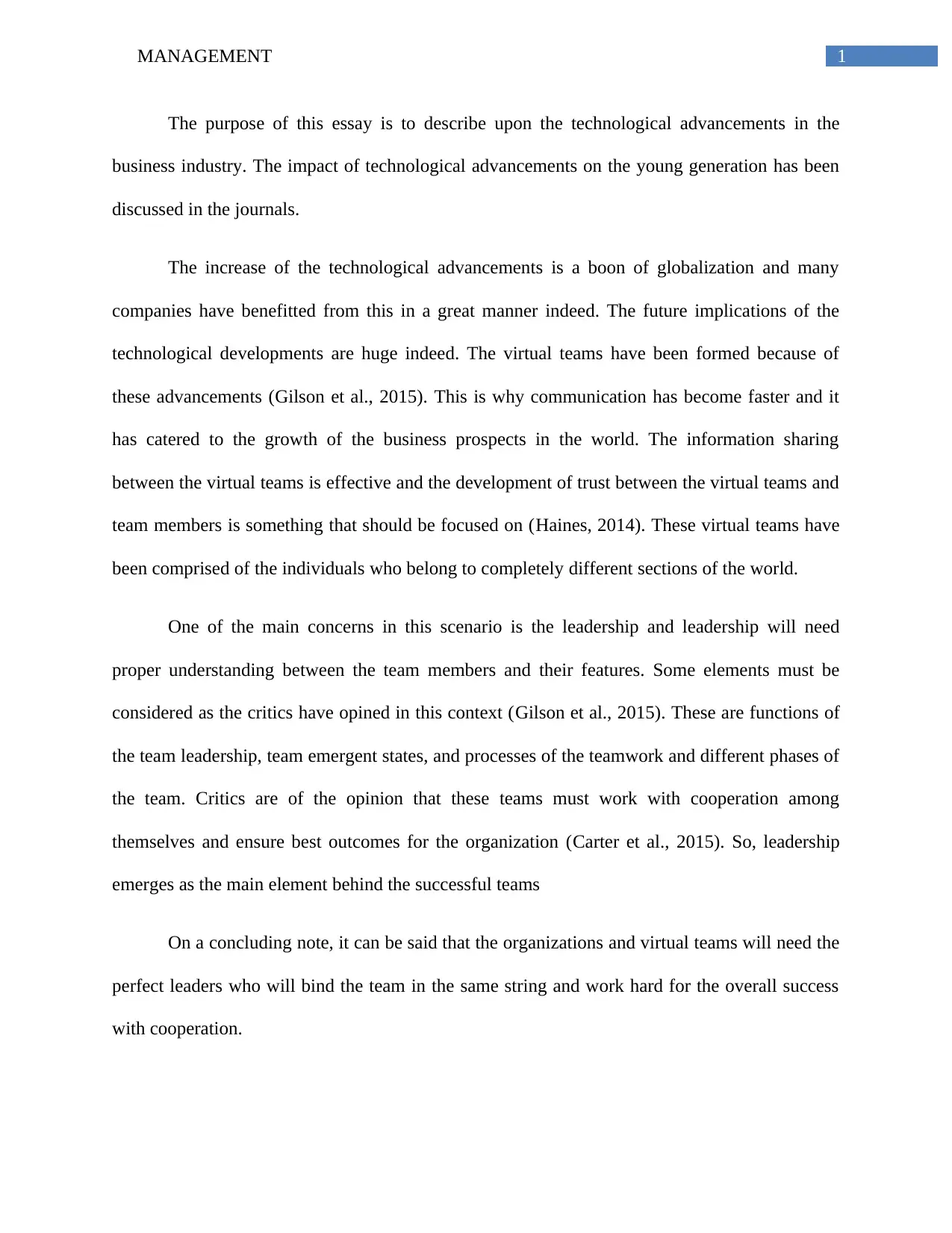Annotated Bibliography on Implementation of Virtual Teams in Business
VerifiedAdded on 2022/09/26
|3
|546
|25
Annotated Bibliography
AI Summary
This annotated bibliography examines the implementation of virtual teams in modern business organizations. The assignment, based on a provided brief, focuses on identifying and analyzing ten literary sources related to the topic. The bibliography includes a critical analysis of each source, assessing its relevance to the study of virtual teams, leadership, and the impact of technology. The essay discusses the benefits of virtual teams, such as faster communication and information sharing, as well as the challenges, including the need for effective leadership and the development of trust among team members. The selected sources, including journal articles, cover various aspects of virtual team dynamics, leadership styles, and the influence of globalization on business practices. The bibliography highlights the importance of leadership in fostering cooperation and achieving organizational success within virtual team structures. It draws on the provided references to offer a comprehensive understanding of the current state of virtual teams in business.
1 out of 3










![[object Object]](/_next/static/media/star-bottom.7253800d.svg)